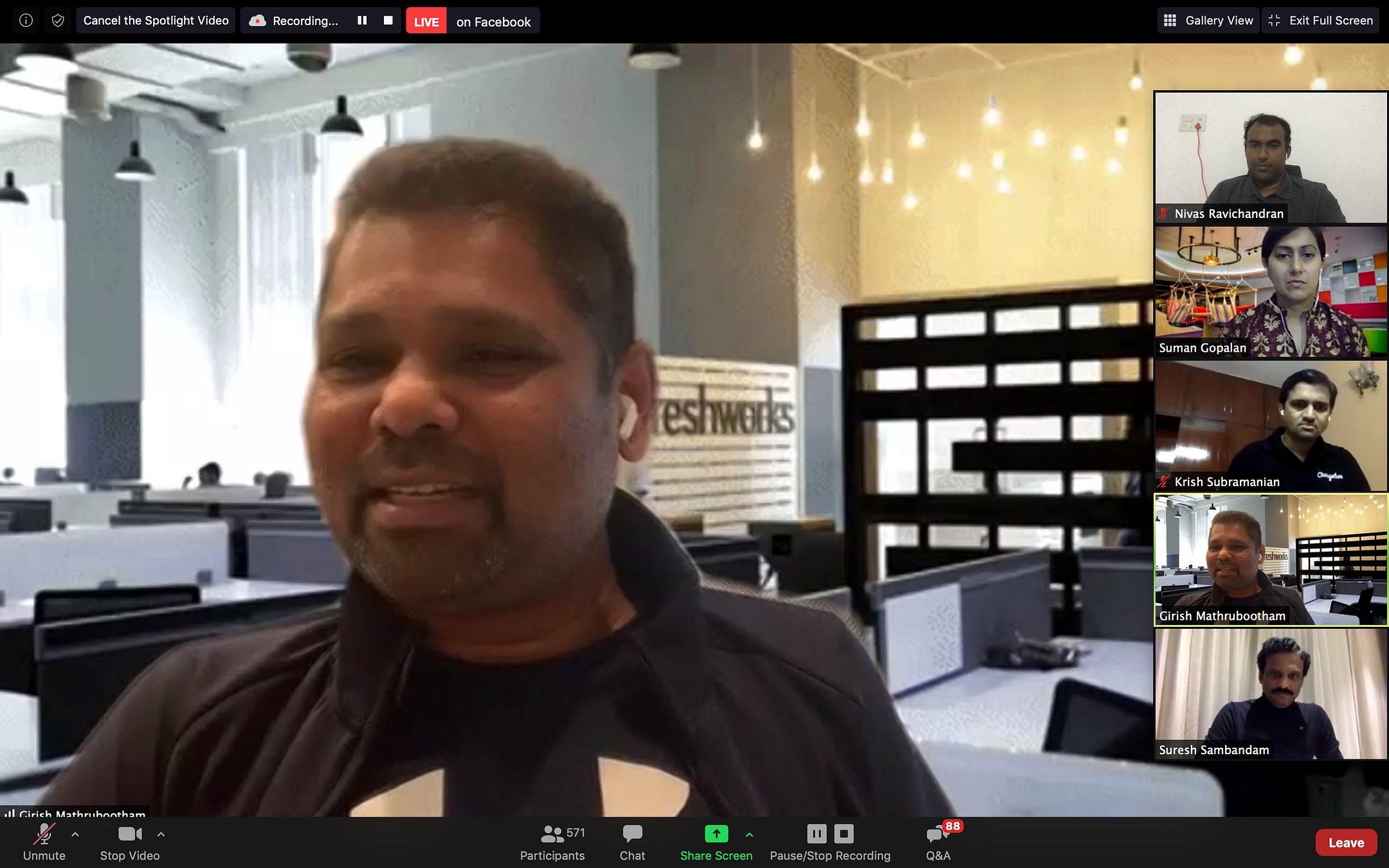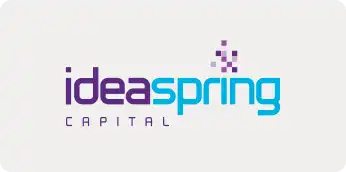The extended lockdown imposed by governments worldwide has birthed the idea of working remotely or commonly called — the Work From Home (WFH) model. A New Normal has been established and the adaption has been remarkably fast for employees and their employers. Now, with the lockdown being lifted in a staggered manner, depending on the geography, the road to recovery is being paved with a high degree of uncertainty.
Companies are opening up too, and doing so with great caution. The question arises — What Next? Understandably, there is a flurry of concerns and mixed reactions, as we grapple with the twin objectives of saving lives and livelihoods. How will it be at the workplace and are we going back to the “old normal” anytime soon? To answer these concerns, Freshworks hosted a panel on May 20th which had a stellar line of speakers sharing their insights. At the behest of SaasBoomi, I have tried to capture the leading messages.

“Zoom is to virtual communication today what Xerox is to photocopying”
If not, it’s surely galloping there. Other tools such as Google Meet has also registered 15 million downloads — precipitating the theory that our work life has completely changed to now establish the cliché, NEW NORMAL.
Work-life balance too has acquired a new meaning with the line blurring between office time and personal, but obviously with a lot of flexibility thrown in as well. That, we have adapted so well is evident — our virtual coffee chats have trumped the real thing — at least for now. Well, almost. Be that as it may, it cannot be denied that most people are missing the office environment as one was used to. The growing restlessness is goading people to ask — how long will it last?
To take a deep dive and address these issues, we had the ever-so-vivacious Suman Gopalan, the CHRO of Freshworks engage with a stellar panel of Founder CEOs from SaaS-based companies, comprising:
1. Krish Subramanian, Founder & CEO, Chargebee. It is a subscription billing solution company for online businesses.
2. Suresh Sambandam, CEO, Kissflow — a cloud-based process management software company.
3. Girish Mathrubootham, Founder & CEO, Freshworks, a SaaS Unicorn valued at 3.5 billion USD.

Business Continuity, Employee Morale, and Productivity During These Times
Our panelists’ companies have a global presence so they could see the lockdown coming but of course, no one had imagined this extended period back in the second week of March. Given their experience in other countries, they used it to transition quickly to WFH model even before the Indian government had mandated the lockdown on the 24th of March, thus buying some additional time. Inasmuch, having a SaaS model, made it easier for them to shift work remotely in comparison to other sectors that are heavily reliant on on-premise software, and not geared for this kind of a massive shift in such a short time.
In the early days, most didn’t realize that the pandemic would be so devastating. But very quickly, the message hit hard. As Suresh Sambandam says, “Earlier we were working from 13 offices and now we have 3000”, referring to each employee’s remote work location as an office and emphasizing on business continuity. Wherever required, companies have invested significantly to spruce up the home infrastructure for their employees to enable remote working. Freshworks, as part of their No-one Left Behind strategy, has also been supporting their vendors — 350 of them during this crisis.
The panelists also underscored the importance of communication from the CEO during a crisis. It’s better to err on the side of over-communication than not, they averred. Suresh Sambandam, despite the overwhelming challenges, sees this as an opportunity to realign and re-engineer business processes — output-based model to an outcome-based one is one example — which may not have been possible earlier. Keeping employee morale high and ensuring that there’s no significant drop in productivity, are the topmost concerns for all.
The other critical aspect is, constantly looking after the mental well-being of employees. Along with virtual Town Halls, meetings, and hackathons, the fun element through online connects aimed at team-bonding, also came out strongly during the discussion — DJs, yoga & meditation classes, fitness competitions, 21-day lockdown challenge, etc.
Opening Up — how?
It is dependent on geographies. Nations are in different stages from a COVID impact standpoint, right now. Our panelists are of the opinion that employees’ well-being is a primary concern and they aren’t in a tearing hurry to open up. The remote working model has worked well and caution should be thrown to the wind. Our industry is fortunate that remote working is possible for a greater part of the workforce, unlike some others where physical presence on sites can’t be avoided.
Krish Subramanian was forthright —
“We’ve had a distributed architecture even before COVID struck but we weren’t too big on the WFH model. We would like to open up but with a great deal of caution. A Hybrid model is what we are considering from a long-term standpoint where coming to the office on a regular basis, could be made optional”.
As Girish Mathrubootham says,
“There are two kinds of employees — those who can work remotely in the long run and save on long commuting time, and others, who can’t due to infrastructural challenges.”
Looking at distributed smaller offices is a powerful idea that resonates strongly.
Suresh Sambandam calls it —
“Work From Anywhere. If this becomes an industry-wide trend then the commercial real estate sector will be severely impacted. We don’t know yet how it will play out”
When companies do open, all necessary precautions will have to be taken, such as sanitization, contactless sanitized meeting rooms, thermal screening, re-worked floor plan to enable social distancing norms, provision for personal protective gear, and putting limitations on face-face meetings, etc. We also need an extensive playbook on workplace and workforce readiness. Near-shoring to Central America is an idea they are toying with to do away with the rigour of night shifts. Of course, existing talent will be given the option to relocate if it materializes. Several angles are being considered right now keeping employees’ well-being in mind.
For the hybrid model to work out smoothly and from a long-term standpoint, both the considerations are equally important — the organizations’ and the employees’. But what really stands out is that office plays such a vital role in culture formation. The craving for the “old normal” is surely not to be missed.
Tech Solutions to Acclimatize With the New Normal
The idea of a digital workplace had already picked up even before the pandemic struck. Existing tools were being put in place and now things are happening at a much quicker pace. There’s a whole range of applications being deployed to do with measuring productivity, mental well-being, team bonding and even assessing employee health, without of course breaching on privacy — a critical aspect.
If the traditional model changes forever and there’s a strong possibility it will, then the way we value time will also need to evolve. We can’t be sucked into endless virtual meetings and we have to be sensitized about the difference between being busy and being productive.
Culture is one aspect that will evolve in a virtual environment. While hiring can be done easily, but onboarding recruits and getting them to imbibe the organizational culture would not be easy. Then again, in a Work From Anywhere model, companies will get access to a wider talent pool — especially women and those people who can’t move out of their hometowns in Tier 2 & 3 locations. Physical location will cease to matter.
Krish Subramanian had an interesting point of view. He spoke about the Lifetime Value of the Employee on the lines of what organizations do for customers. We should be looking at optimizing value from a long-term standpoint. And for it to be sustainable, employees will need flexibility in working hours without a sense of guilt weighing them down. This pandemic has busted many myths, the chief among them being about swiping cards and registering attendance. In an outcome-based environment, frankly, it should matter very little.

























